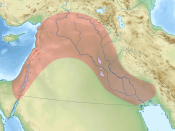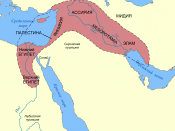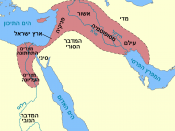The Fertile Crescent is an area in which the soil is constantly renewed by a river depositing nutrients. These nutrients make harvesting ideal for any individuals living along its border. The Sumerians were the earliest known inhibitors of the Fertile Crescent located in Ancient Egypt residing around the Tigris and Euphrates rivers. Around 4000 B.C. in southern Mesopotamia this group of people prospered from the land and made many advances in science, mathematics and literature of which we still use today.
There were a number of independent city-towns along the Crescent, each consisted of a small city and its surrounding area. It was not the size of the population of each town that made it prosperous, but rather the advances in which the people accomplished within it. If looking at a city from above, it would have look like a square maze with large thick walls. When entering the walls you would find yourself entranced by the large pyramid-temple stretching into the sky.
These temples would be decorated with plants, trees and shrubbery, which adorned each of the layers. These ZIHG uh rats, where built to warship the cities gods or goddesses.
The people of the cities were very religious, however there were still social classes within the giant walls. One such social class was the rulers. They lived in luxurious palaces with graceful courtyards. Meanwhile the rest of the population were confined to tiny houses along narrow alleys and lanes. Inside of this maze the people lived in groups. The groups were characterized by the trade of which the individual practiced. Artisans like weavers or carpenters would live on the same lane. Much like the city streets today, shops would line the streets forming a shopping center or bazar.
Religion govern there way of life, they were polytheistic...


